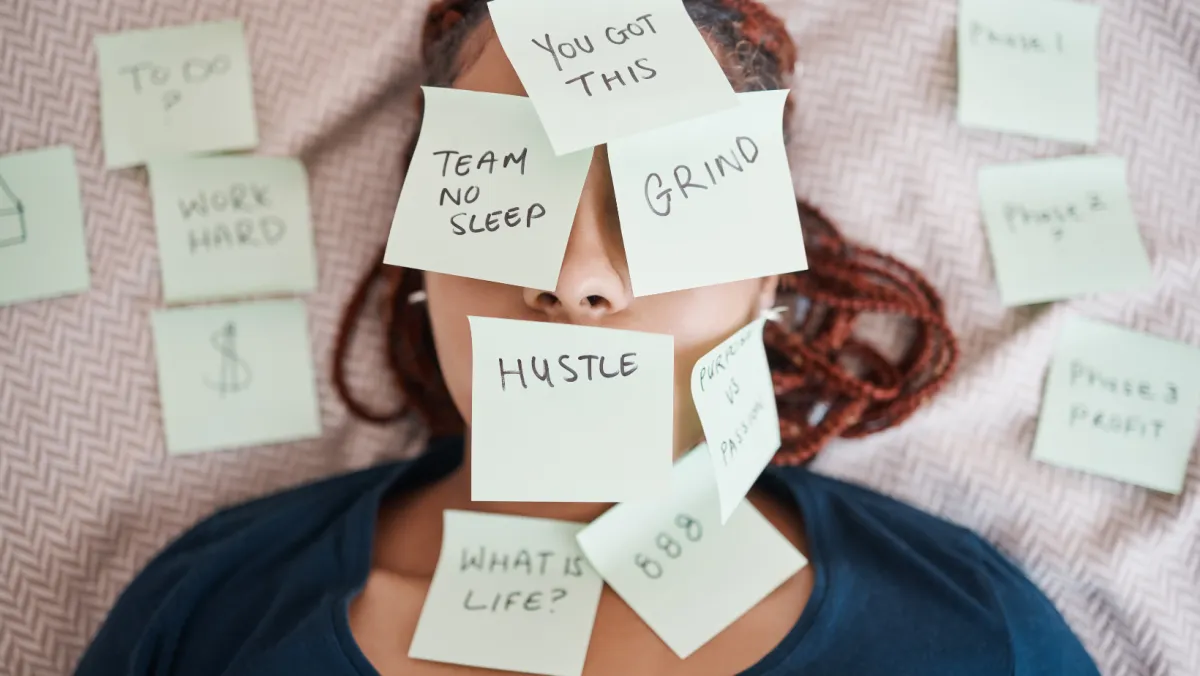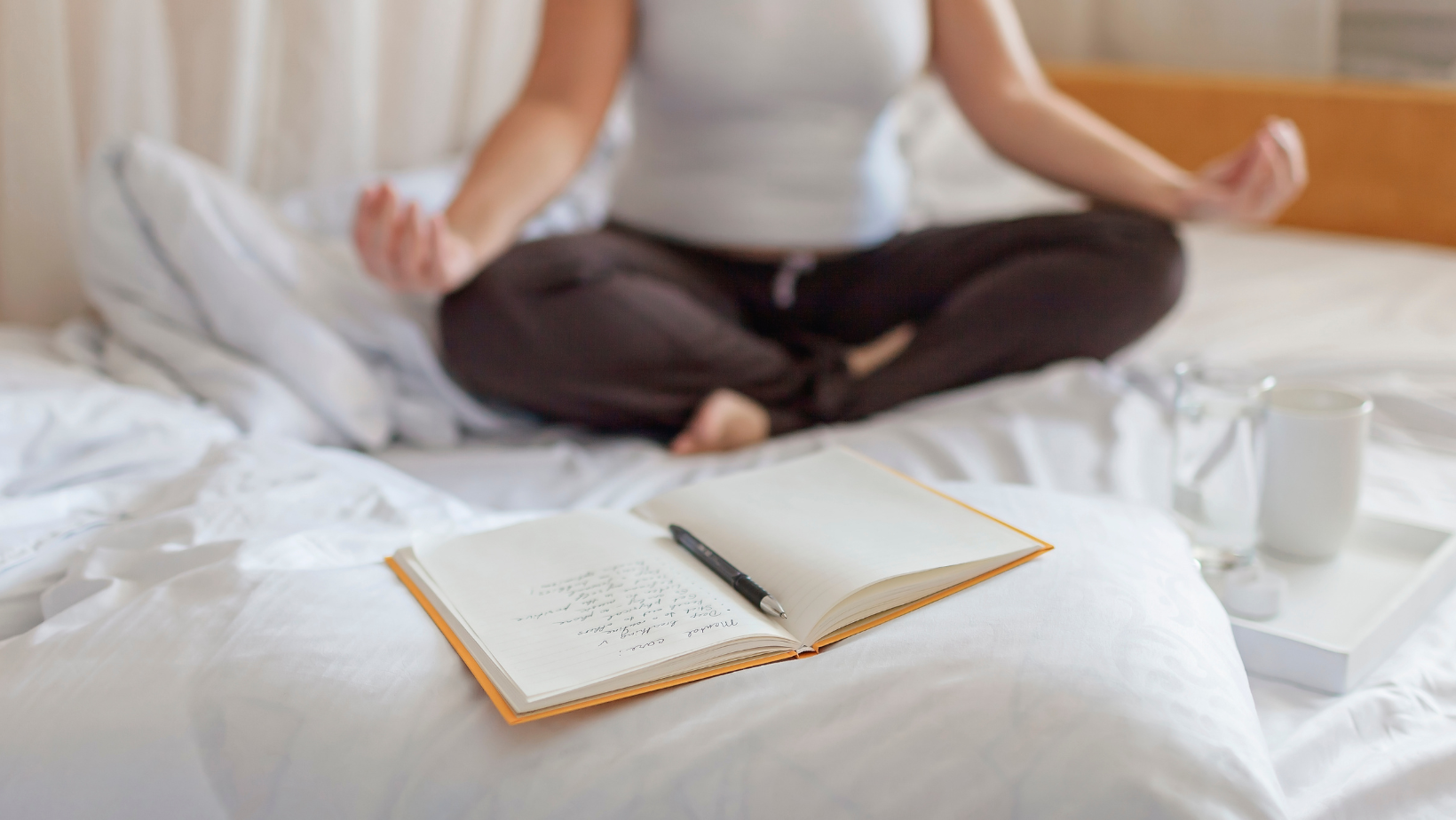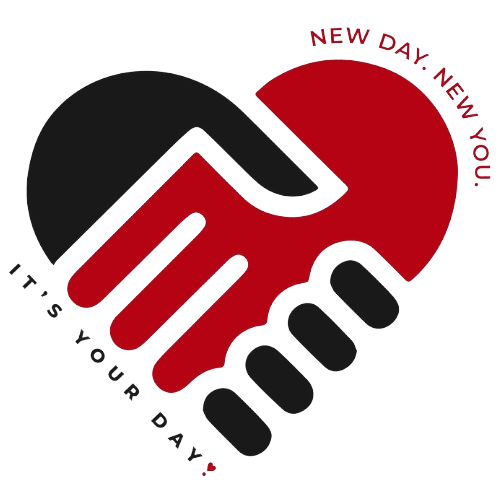
How to Handle Stress and Pressure: 9 Proven Strategies
Stress and pressure are inevitable parts of life, but they don't have to control you. I know firsthand how overwhelming it can feel when the weight of the world seems to be on your shoulders. But here's the thing: you have the power to learn how to handle stress and pressure and find inner peace, even in the midst of chaos.
The key to handling stress and pressure is to have a toolkit of strategies at your fingertips. That's why I want to share with you 9 proven techniques that have helped many navigate even the toughest times. These aren't just generic tips - they're practical, actionable steps you can start implementing today to transform your relationship with stress.
Ready to take control of your stress and find the calm within the storm? Let's dive in and explore these game-changing strategies together.
If you want to dramatically cut down on stress, you need to get to the root of what's causing it. And that means identifying your stress triggers as a crucial step in learning how to handle stress and pressure.
Stress triggers are different for everyone. For some, it might be a looming deadline at work. For others, it could be a stressful situation like a job interview. Whatever your triggers are, it's important to recognize them so you can start to manage stress more effectively.
How to Handle Stress and Pressure: Recognize Physical Symptoms
One way to identify your stress triggers is to pay attention to your body's physical response to stress. Common physical symptoms of stress include headaches, muscle tension, fatigue, and digestive issues.
When you notice these symptoms, take a moment to reflect on what might be causing them. Were you just in a stressful meeting? Did you have a tense conversation with a friend? By recognizing these physical signs, you can start to pinpoint the situations that are triggering your stress.
Keep a Stress Journal

Another helpful tool for identifying stress triggers is to keep a stress journal. Each day, take a few minutes to write down the situations that caused you stress and how you responded to them.
Over time, you may start to notice patterns. Maybe you tend to get stressed out every time you have to give a presentation at work. Or perhaps family gatherings always leave you feeling overwhelmed. By identifying these patterns, you can start to anticipate stressful situations and develop strategies to handle stress more effectively.
Evaluate Your Coping Strategies
In addition to identifying your stress triggers, it's also important to evaluate your current coping strategies. How do you typically handle stressful situations? Do you reach for junk food or alcohol? Do you lash out at others?
If your current coping strategies aren't serving you well, it may be time to try something new. Healthy coping strategies might include exercise, meditation, or talking to a trusted friend. By finding healthy ways to manage stress, you can reduce its impact on your life.
When stress levels are high, it can feel like there's no escape. But by practicing relaxation techniques, you can find moments of calm amidst the chaos.
Relaxation techniques are simple tools that anyone can use to manage stress in the moment. They work by activating the body's natural relaxation response, which helps to slow down breathing, lower blood pressure, and reduce muscle tension.
Deep Breathing Exercises
One of the simplest and most effective relaxation techniques is deep breathing. When we're stressed, our breathing tends to become shallow and rapid. By taking slow, deep breaths, we can signal to our body that it's time to relax.
To practice deep breathing, find a quiet place to sit or lie down. Place one hand on your belly and the other on your chest. Inhale deeply through your nose, feeling your belly expand. Then exhale slowly through your mouth, feeling your belly fall. Repeat this process for several minutes, focusing on the sensation of the breath moving in and out of your body.
Progressive Muscle Relaxation
Another effective relaxation technique is progressive muscle relaxation. This involves systematically tensing and relaxing different muscle groups in the body, which can help to release physical tension and promote a sense of calm.
To practice progressive muscle relaxation, start by finding a comfortable position. Then, beginning with your toes, tense the muscles in your feet for 5-10 seconds. Release the tension and notice how your feet feel. Move up to your calves, tensing and releasing. Continue this process for each muscle group, working your way up to your head.
Mindfulness Meditation
Mindfulness meditation is another powerful relaxation technique that can help to reduce stress and promote a sense of inner peace. The goal of mindfulness is to focus your attention on the present moment, without judgment.
To practice mindfulness meditation, find a quiet place to sit or lie down. Close your eyes and focus on your breath. Notice the sensation of the air moving in and out of your nostrils. If your mind starts to wander, gently bring your attention back to your breath. Continue this process for 5-10 minutes, or longer if you wish.
Yoga and Stretching

Finally, yoga and stretching can be wonderful tools for reducing stress and promoting relaxation. These practices help to release physical tension, improve flexibility, and calm the mind.
If you're new to yoga, consider taking a beginner's class or following along with a video at home. Focus on gentle, restorative poses that allow you to relax and release tension. Even a few minutes of stretching each day can make a big difference in your stress levels.
While relaxation techniques can be helpful in the moment, developing healthy lifestyle habits is key to managing stress in the long term. When we take care of our bodies and minds, we're better equipped to handle whatever challenges come our way.
So what does a healthy lifestyle look like? It's all about balance. Making small changes in your daily routine can add up to big improvements in your mental health and overall well-being.
Get Enough Sleep
One of the most important lifestyle habits for managing stress is getting enough sleep. When we're well-rested, we're better able to cope with stress and make healthy choices throughout the day.
Aim for 7-9 hours of quality sleep each night. Create a relaxing bedtime routine, avoid screens before bed, and keep your bedroom cool and dark. If you struggle with insomnia, talk to your doctor about potential solutions.
Exercise Regularly
Regular exercise is another key component of a healthy lifestyle. Not only does it improve physical health, but it also boosts mood, reduces stress, and promotes better sleep.
Aim for at least 30 minutes of moderate exercise most days of the week. Find activities you enjoy, whether it's going for a run, taking a dance class, or playing a sport. The key is to make exercise a consistent part of your routine.
Eat a Balanced Diet
What we eat can also have a big impact on our stress levels. A balanced diet rich in fruits, vegetables, whole grains, and lean protein can help to stabilize mood and improve overall health.
On the other hand, a diet high in processed foods, sugar, and caffeine can contribute to feelings of anxiety and stress. Aim to eat regular, balanced meals throughout the day, and limit your intake of caffeine and alcohol.
In today's fast-paced world, it's easy to feel overwhelmed by all the demands on our time. But by learning to manage your time effectively, you can reduce stress and feel more in control of your life.
Effective time management is all about setting priorities and creating a plan to achieve your goals. It's about working smarter, not harder.
Prioritize Tasks
One of the first steps in effective time management is to prioritize your tasks. Make a list of everything you need to do, and then rank each item in order of importance.
Focus on the tasks that are most critical to your goals, and let go of the ones that aren't essential. Learn to say no to requests that don't align with your priorities.
Break Projects into Smaller Steps
When you're faced with a big project, it can be overwhelming to know where to start. That's where breaking it down into smaller steps can be helpful.
Take a few minutes to map out the steps involved in completing the project. Then focus on one step at a time, rather than trying to tackle the entire project at once. Celebrate each small victory along the way.
Learn to Say No
One of the biggest challenges in time management is learning to say no. It's easy to feel like we have to say yes to every request that comes our way, but that's a recipe for burnout.
Before taking on a new commitment, ask yourself if it aligns with your priorities and goals. If not, it's okay to say no. Remember, every time you say yes to something, you're saying no to something else.
Delegate When Possible
Finally, don't be afraid to delegate tasks when possible. Whether it's at work or at home, there are likely tasks that someone else could handle just as well as you.
By delegating, you free up time and energy to focus on the tasks that are most important to you. Plus, it gives others the opportunity to learn and grow.
No matter how well we manage stress on our own, there will be times when we need the support of others. That's why building a strong support system is so important.
A support system can include family, friends, coworkers, or even a mental health professional. The key is to surround yourself with people who lift you up and provide a listening ear when you need it.
Talk to a Trusted Friend or Family Member
When you're feeling stressed, talking to a trusted friend or family member can be incredibly helpful. Sometimes just verbalizing your feelings can provide a sense of relief.
Choose someone who you feel comfortable opening up to, and who will listen without judgment. Share what's been on your mind, and allow them to offer support and encouragement.
Join a Support Group
If you're dealing with a specific stressor, such as a chronic illness or addiction, joining a support group can be a wonderful way to connect with others who understand what you're going through.
Support groups provide a safe space to share experiences, learn coping strategies, and feel less alone. Many organizations offer online support groups, so you can connect with others from the comfort of your own home.
Seek Professional Help
Finally, don't hesitate to seek professional help if you're struggling to manage stress on your own. A mental health professional can provide valuable tools and support to help you cope with stressful situations.
Whether it's through therapy, medication, or a combination of both, professional help can make a big difference in your ability to handle stress. Remember, seeking help is a sign of strength, not weakness.
Conclusion
How to handle stress and pressure is a skill that takes practice, but with these 9 proven strategies in your toolkit, you're well on your way to mastering the art of stress management. Remember, it's not about eliminating stress altogether - it's about learning to navigate it with grace and resilience.
From deep breathing and mindfulness to setting boundaries and practicing self-care, these techniques are your secret weapons in the battle against stress. And the best part? You have the power to choose which strategies work best for you and your unique needs.
So the next time stress and pressure come knocking, you'll be ready. You'll have the tools and the confidence to face any challenge head-on, knowing that you have what it takes to find inner calm in the midst of the chaos. Believe in yourself and your ability to handle whatever life throws your way. You've got this!

Ready to navigate life's challenges with confidence and clarity? I offer comprehensive support, including career counseling, relationship guidance, and tools to cultivate emotional wellbeing. Together, we can navigate career changes, workplace dynamics, job loss, personal growth, life transitions, and more. I also help address burnout, boost self-esteem, and manage stress – let's work together to achieve your goals.
Start your transformative journey today – contact me at [email protected]
5005 Dalhousie Dr NW Unit 175 #1393
Calgary, AB T3A 5R8
Email: [email protected]

Copyright 2024 . All Rights Reserved.
